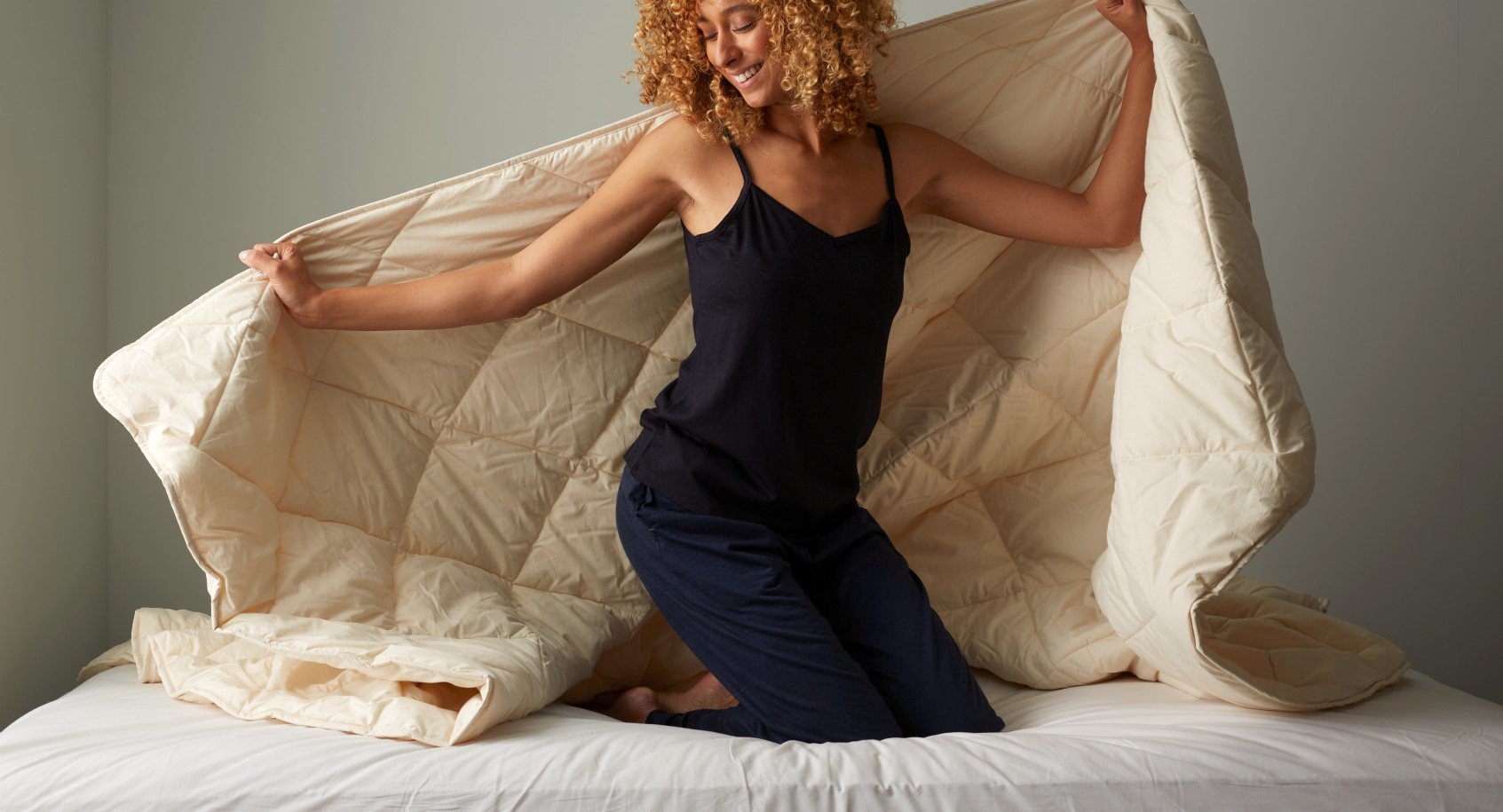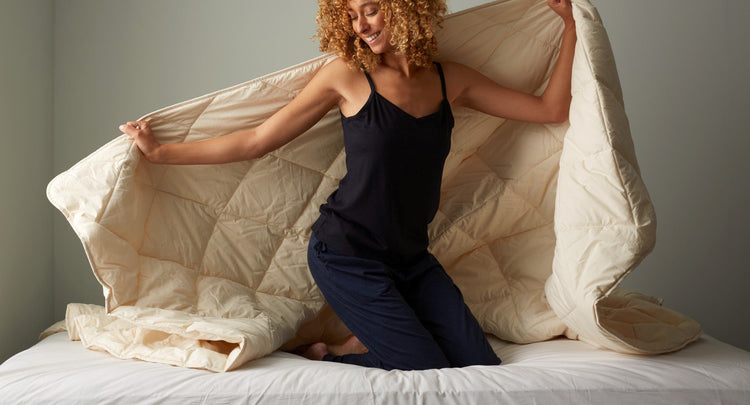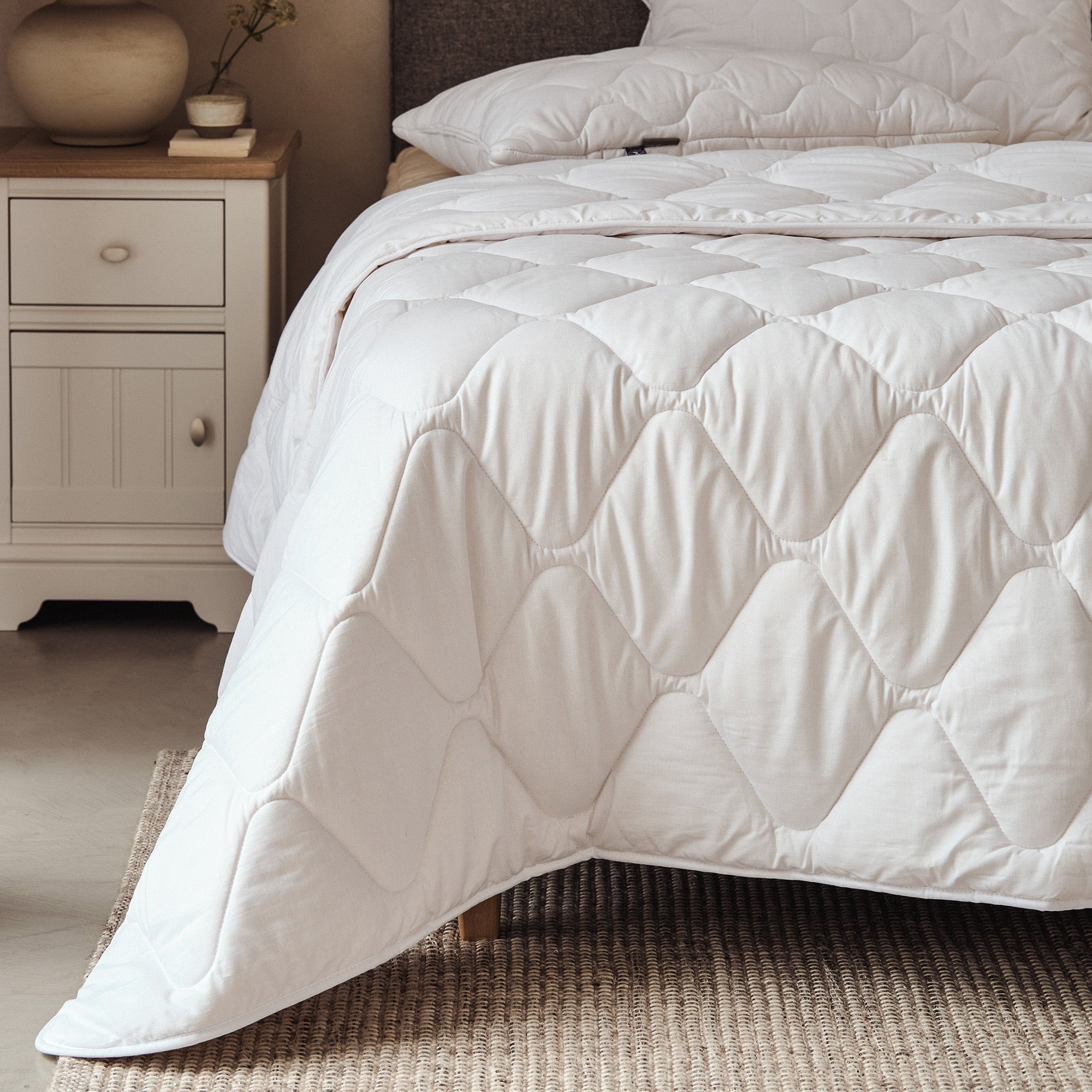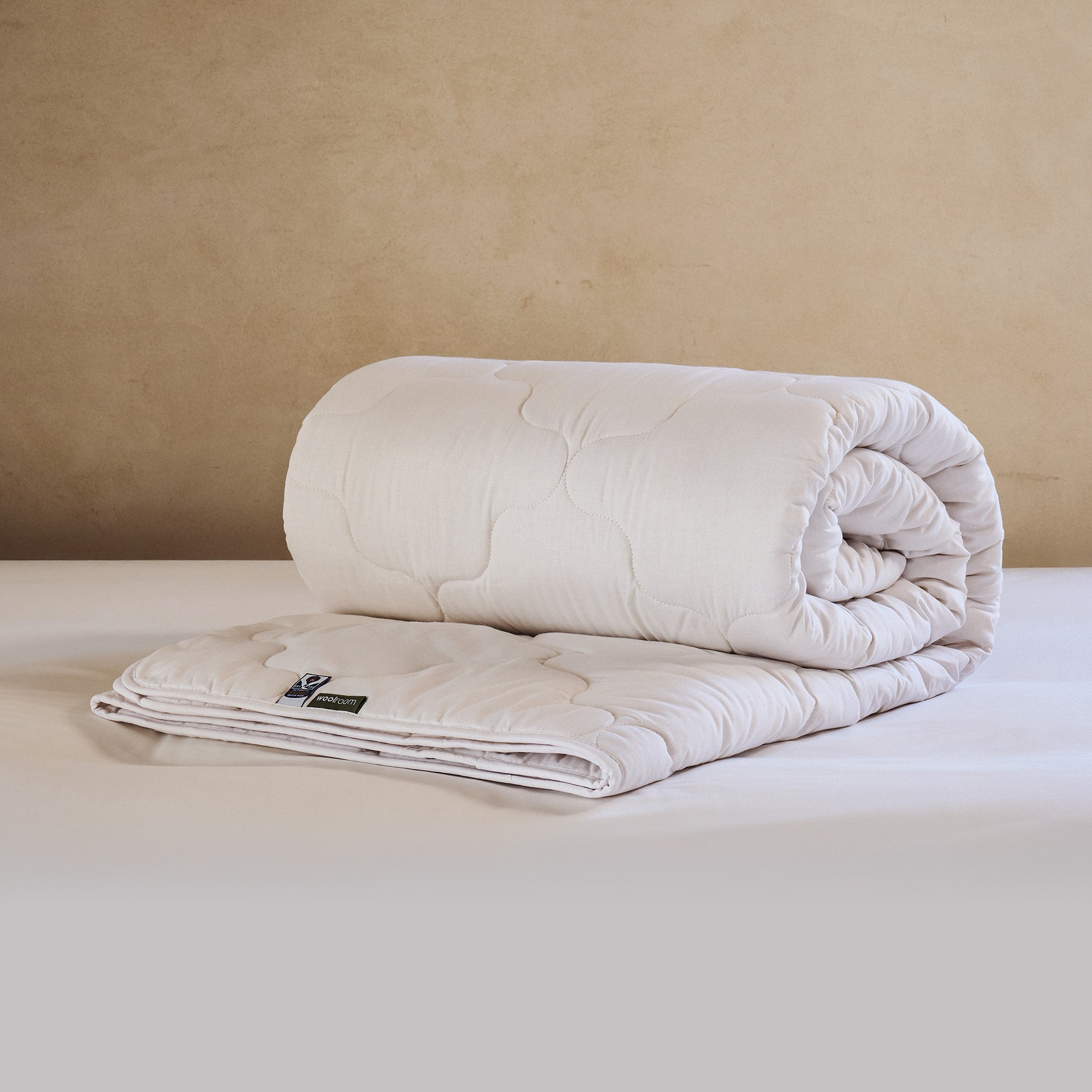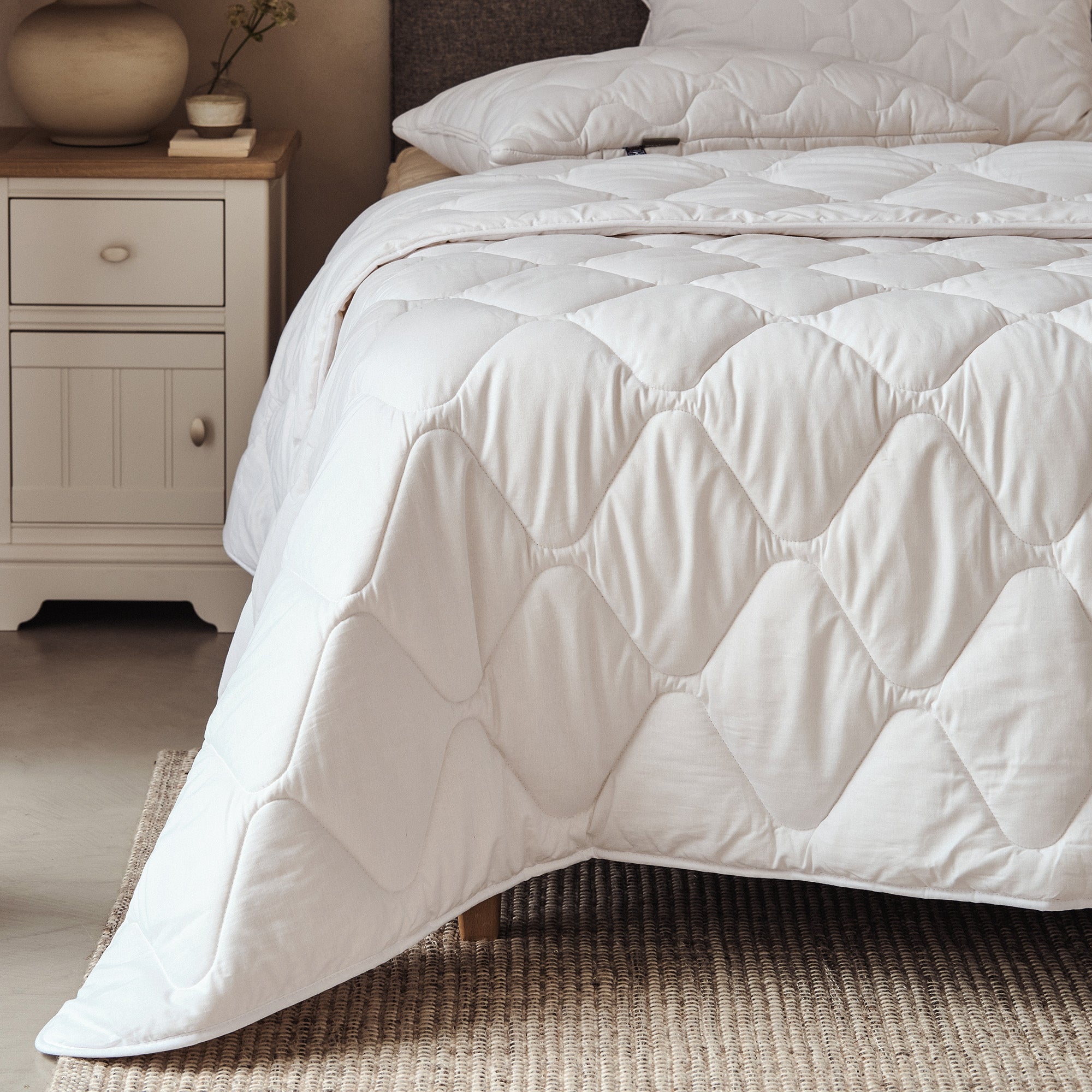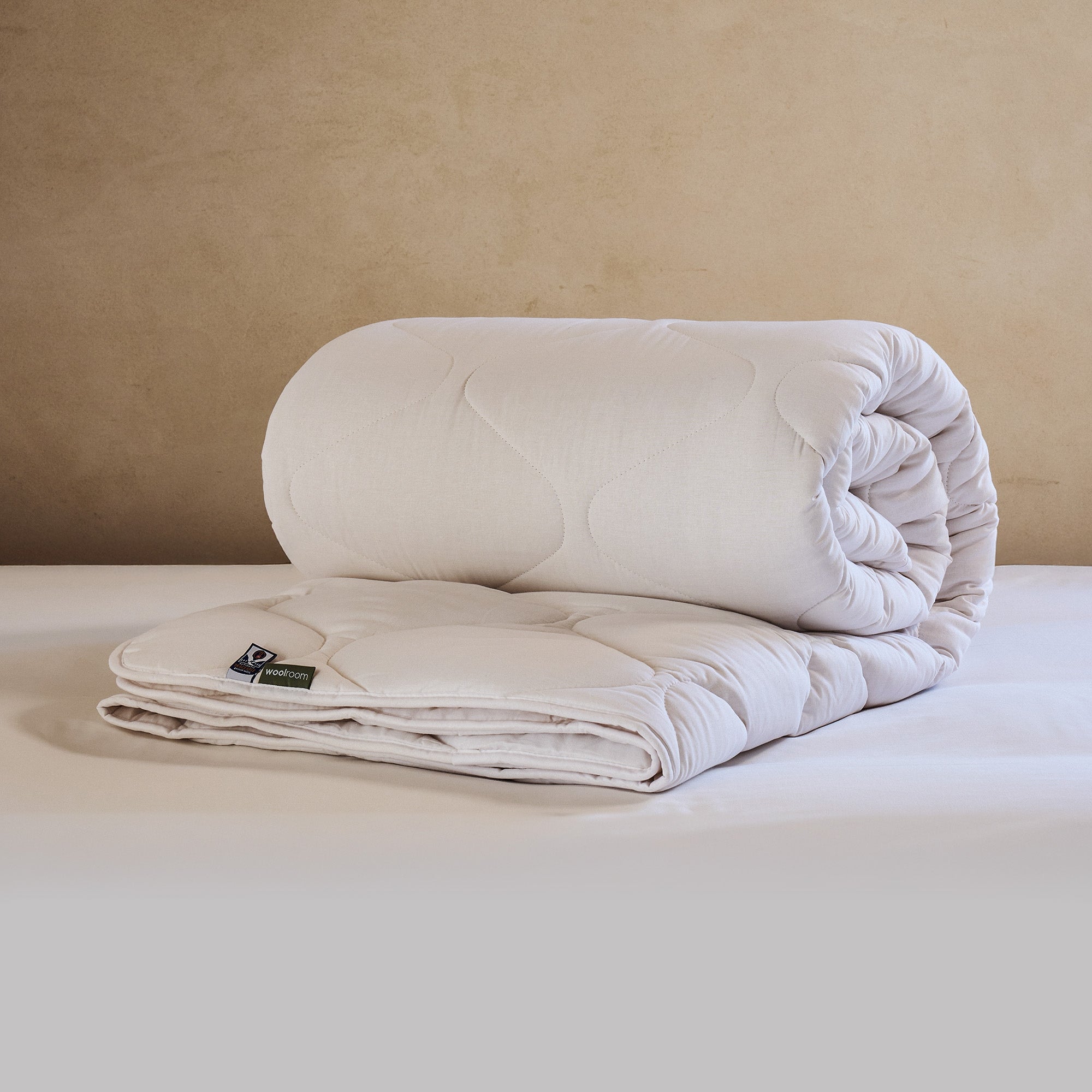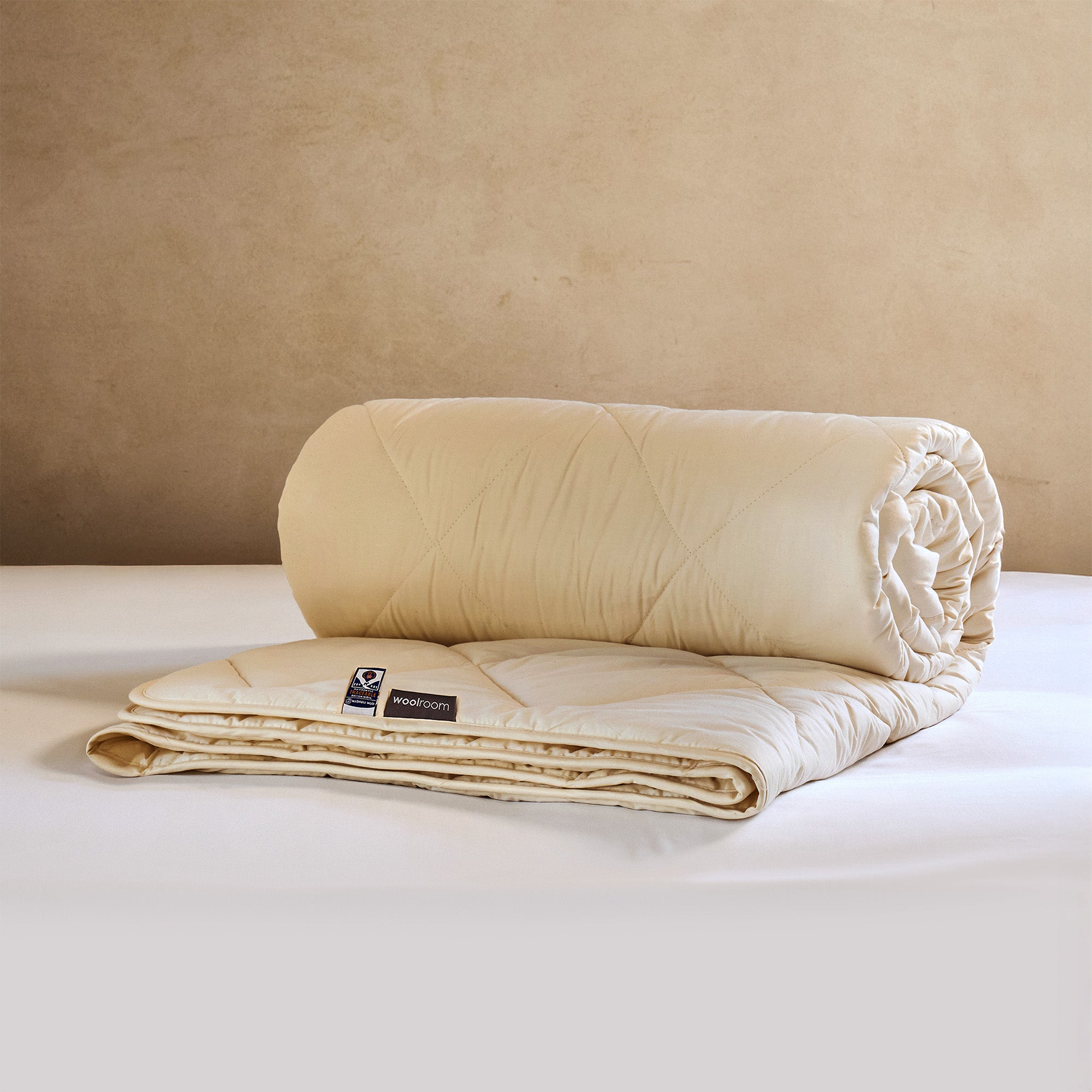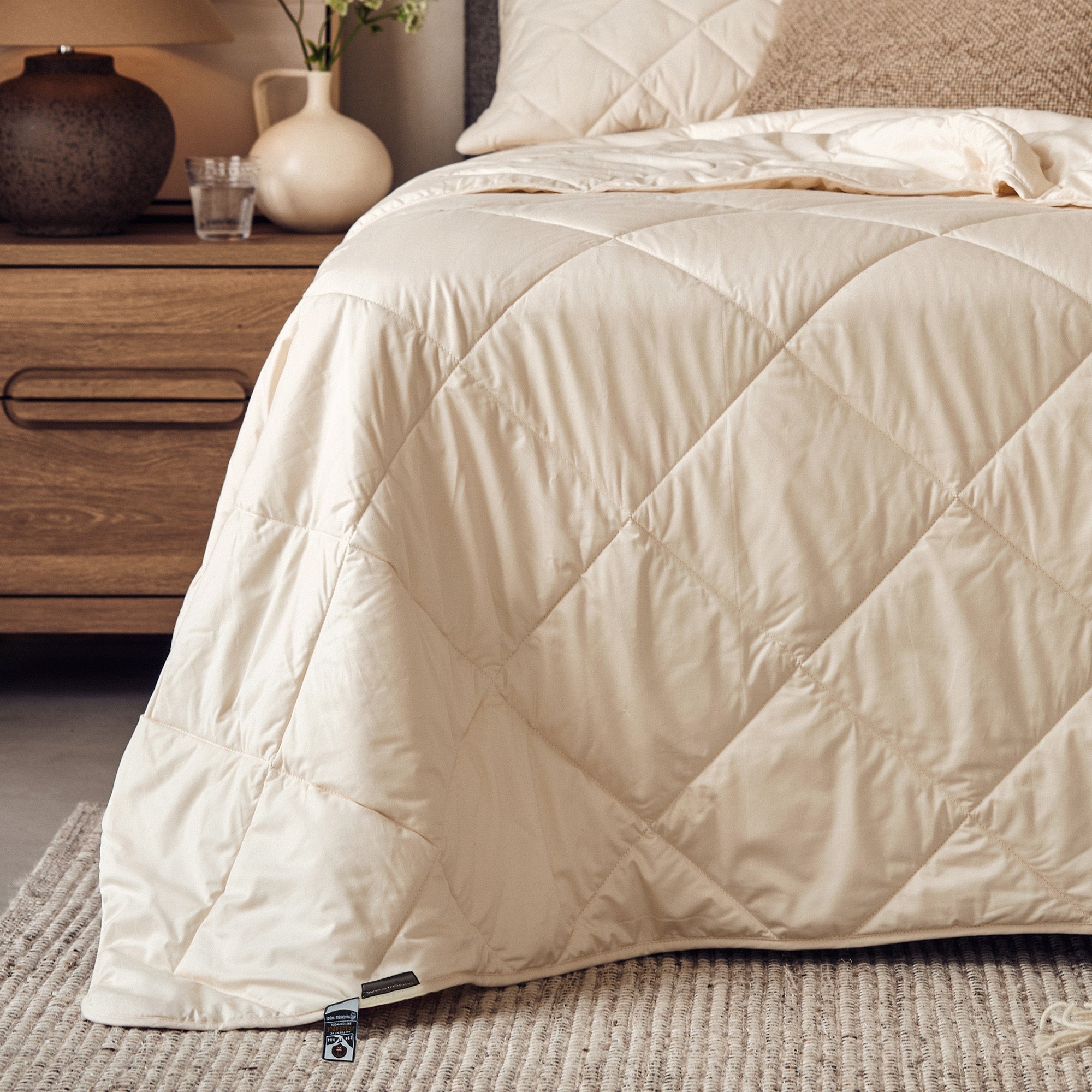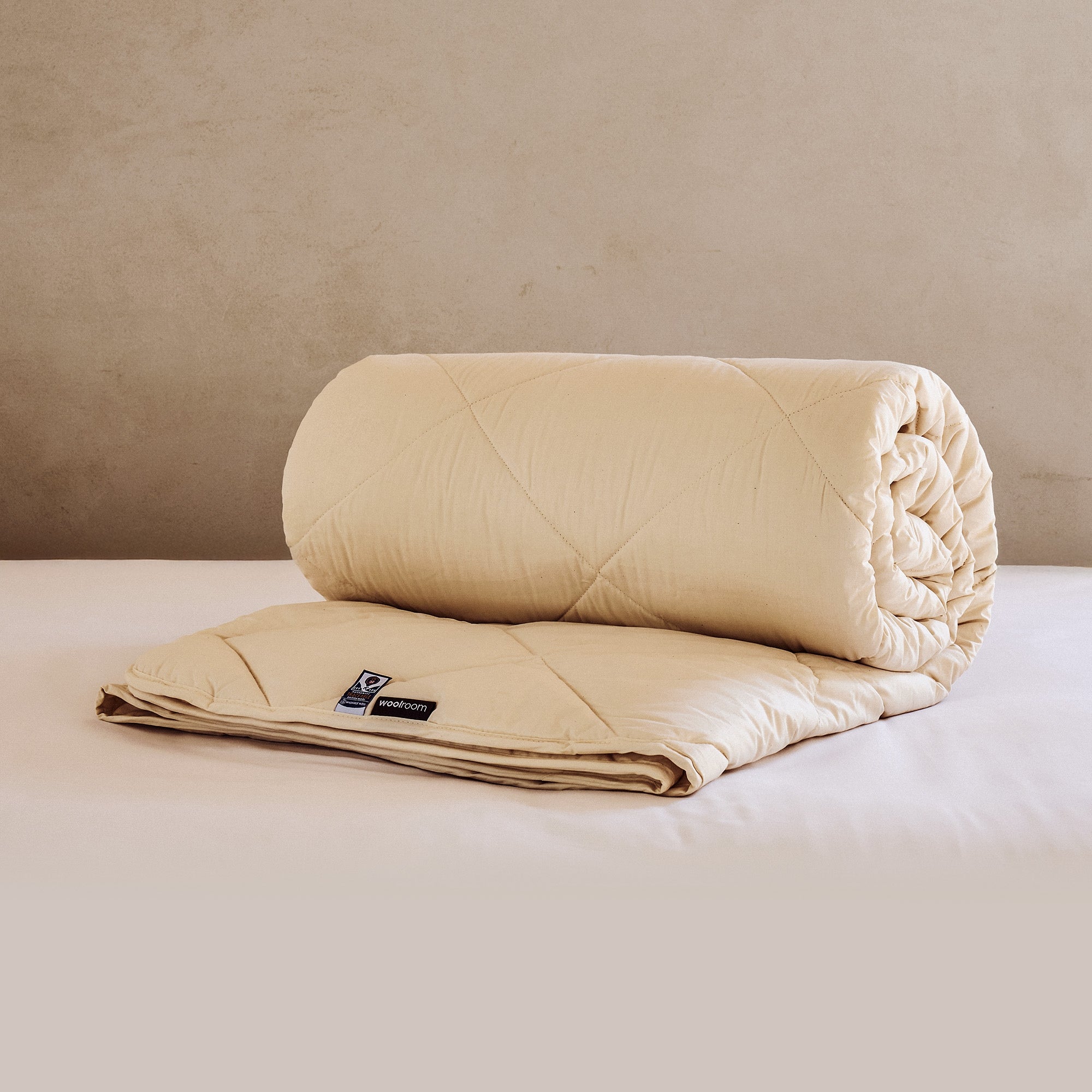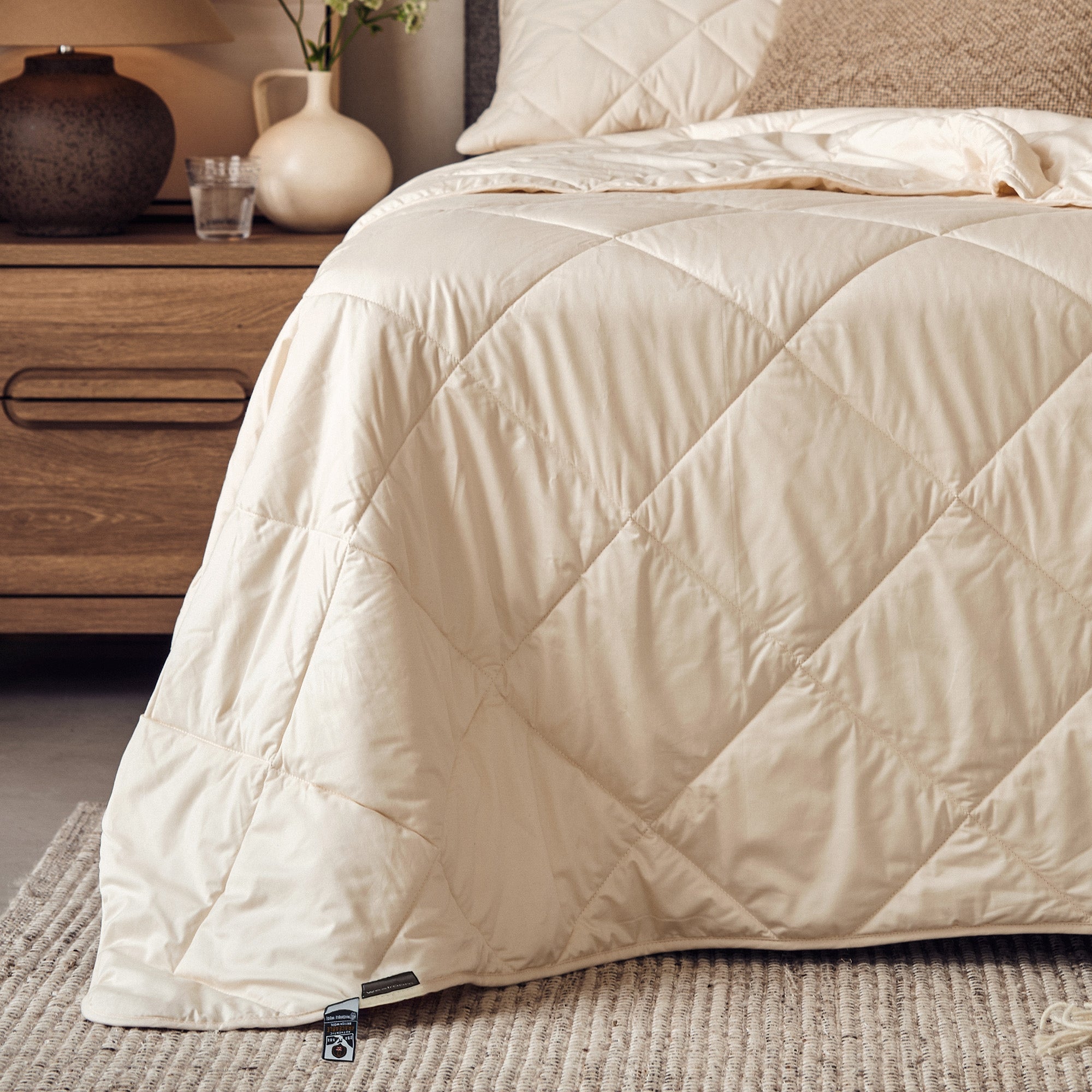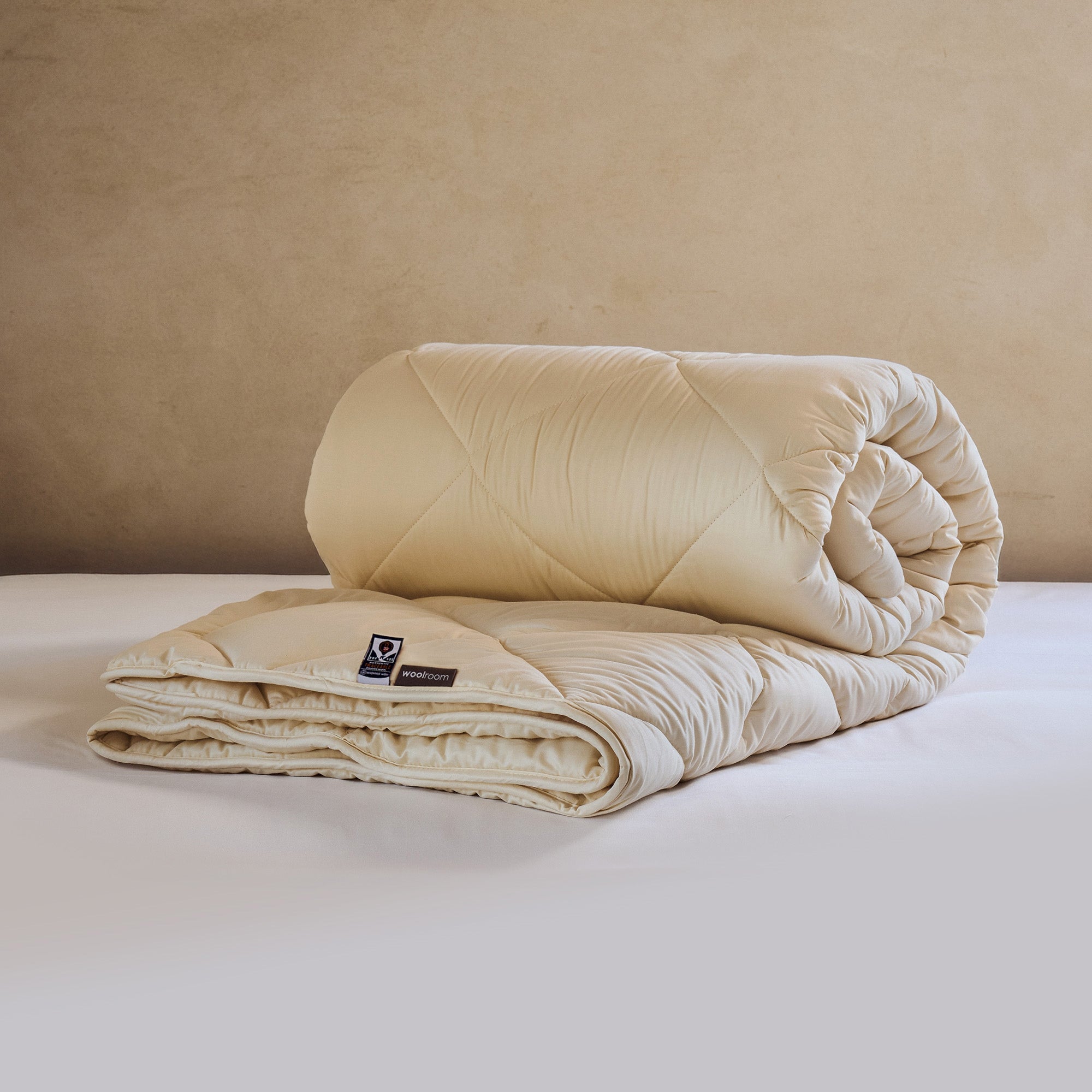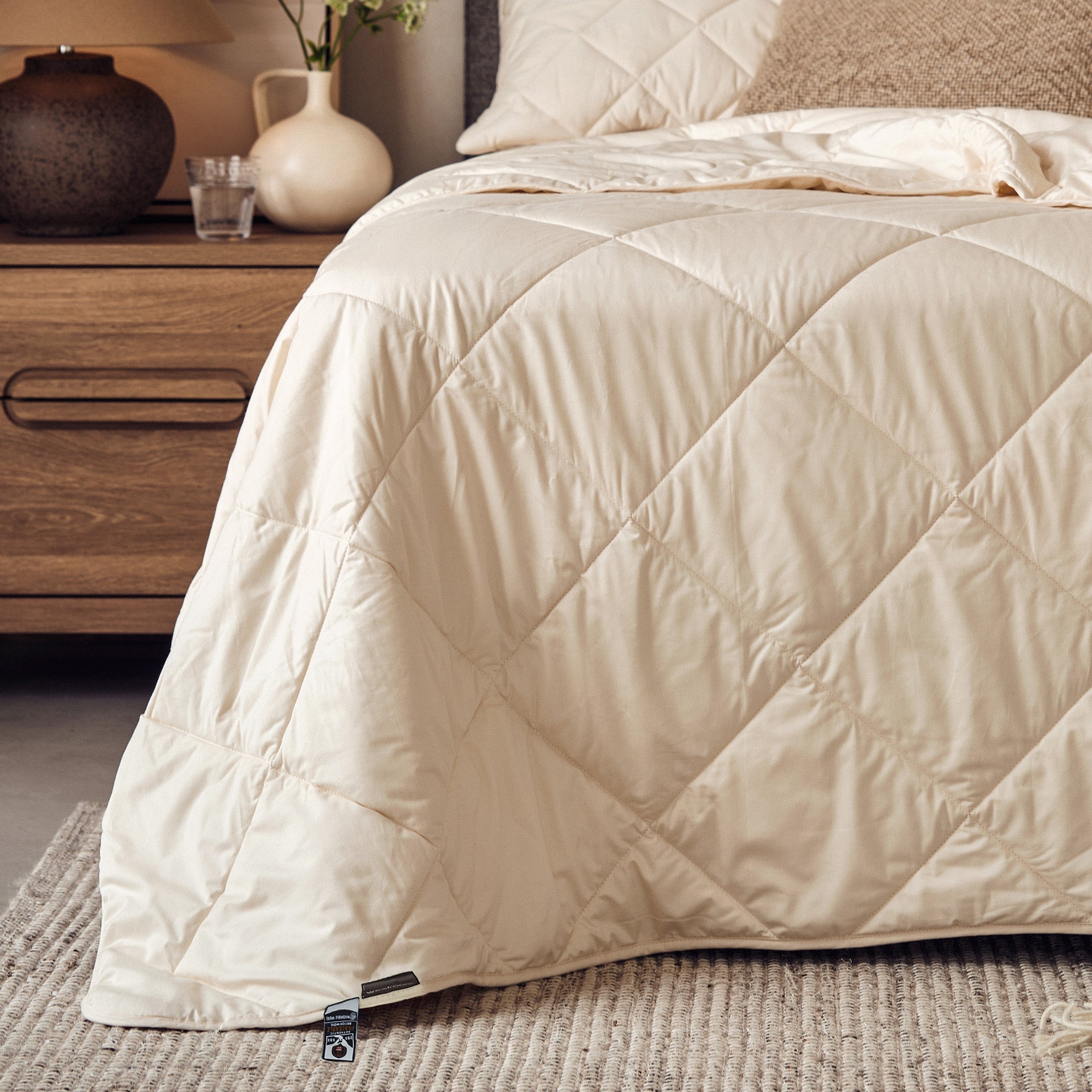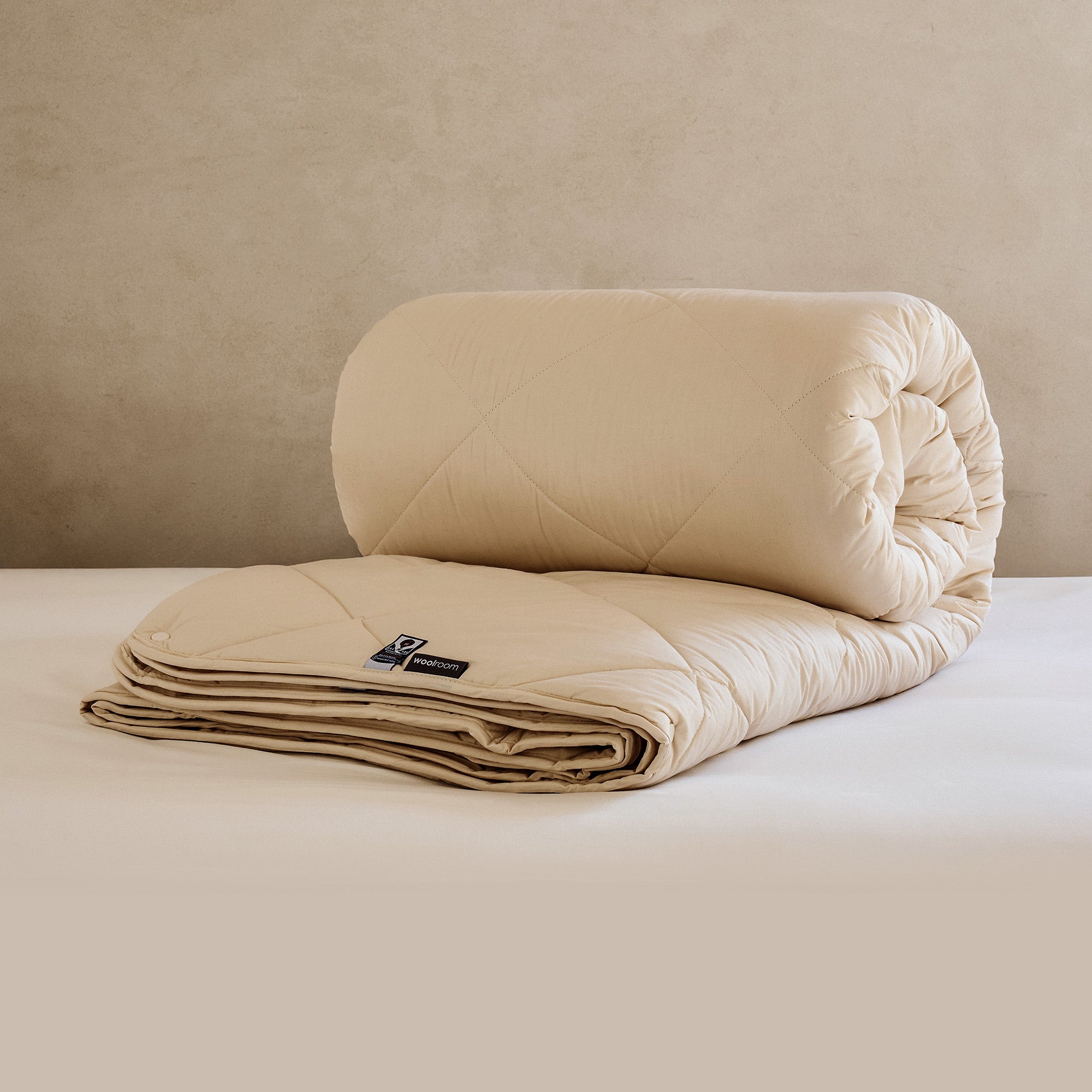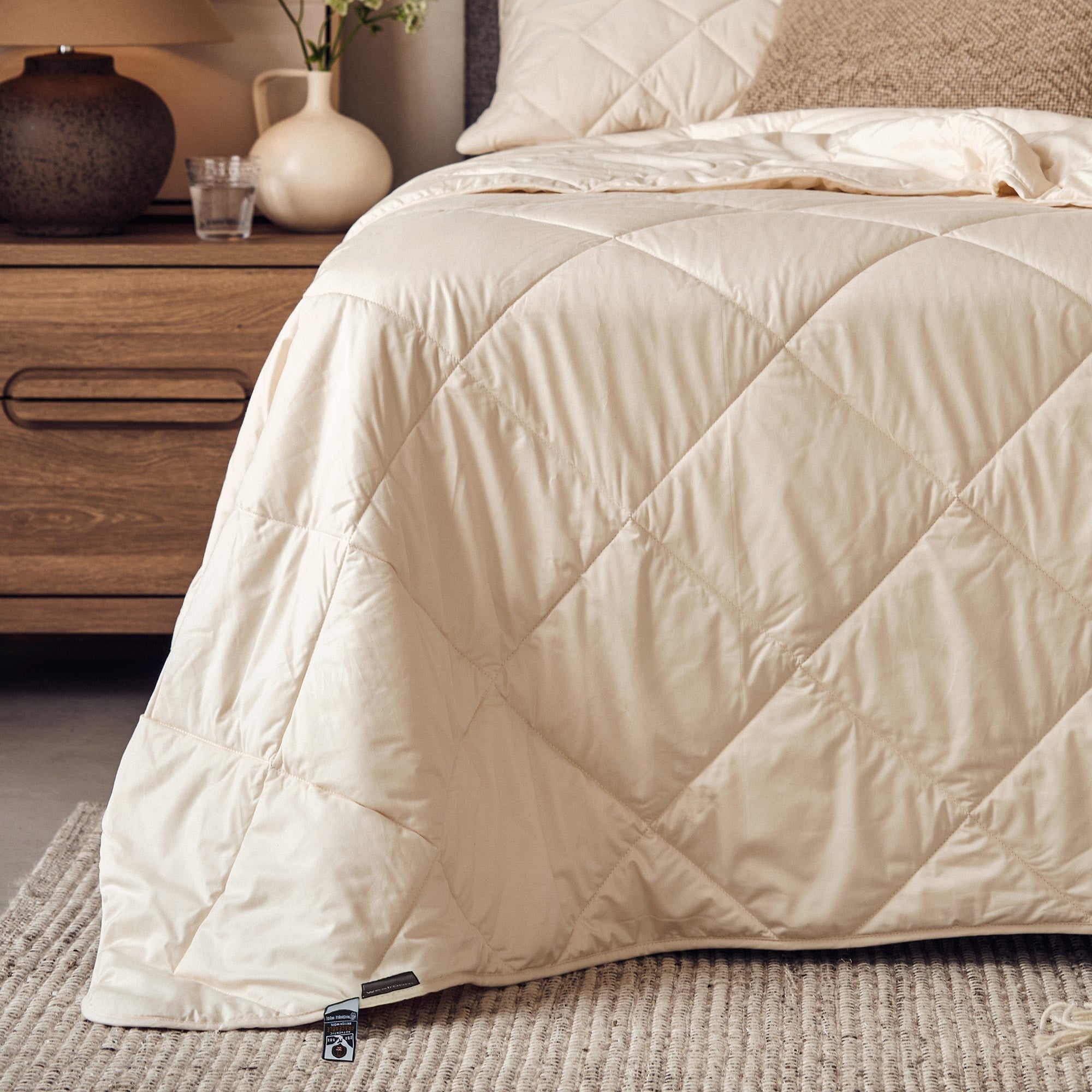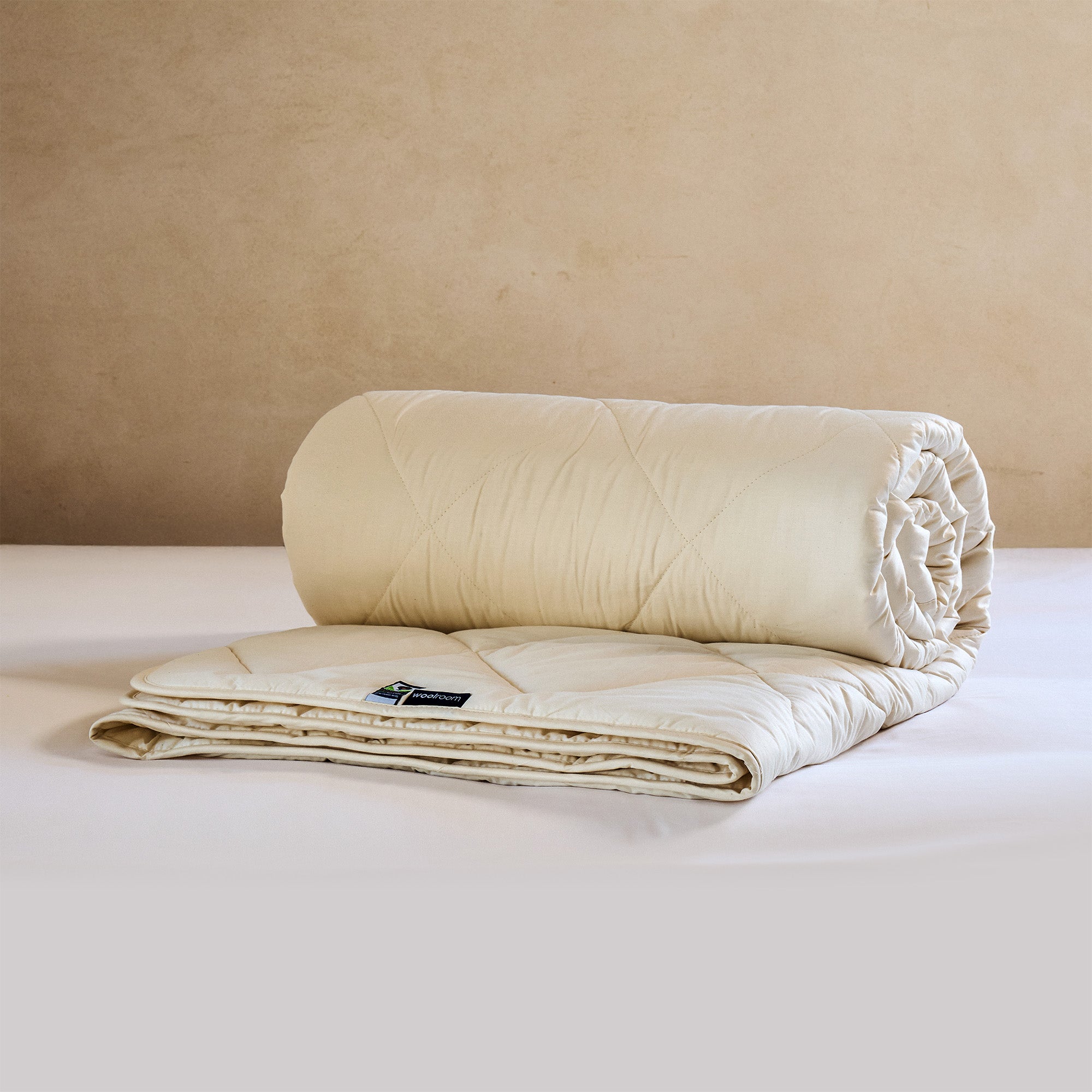Do you lie down at night, ready to get a good night’s sleep, only to wake up coughing or sneezing? Night-time allergies are the likely culprit. Bedding can attract dust mites and mold that can cause allergy symptoms and wreak havoc on your slumber. However, there’s an easy solution for night-time allergies — hypoallergenic comforters.
But how do you find one that’s actually hypoallergenic and meets your sleep needs? We put together this guide to help you find the best comforter for allergies.
What Causes Night-time Allergies?
Night-time allergies can be seasonal or year-round and are typically caused by allergic rhinitis (also known as hay fever). Many people think pollen is the only cause of allergic rhinitis, but several other things, like pet dander, dust mites, and mold, can also be the cause. Dust mites and mold are the most common causes of night-time allergies because they thrive in mattresses and bedding.

Dust Mites
Dust mites love bedding and mattresses because they provide a warm, humid environment with easy access to food (dead skin cells). Unprotected mattresses can harbor up to two million dust mites, and your bedding can become infested in less than 90 days.
Fungal Spores
Sometimes mattresses or bedding grow mold that releases spores while you sleep and triggers nighttime allergies. Mold spores are almost always present in the air, but humid environments encourage their growth. Bedding that isn’t breathable can create excess moisture that contributes to this type of environment.
How Do Anti-Allergy Comforters Work?
Hypoallergenic comforters prevent mold growth and keep dust mites from freely moving around. Depending on the design of the anti-allergy comforter, it can reduce allergens in one of two ways:
Traps Allergens
Some allergy free comforters trap fungus spores and dust mites in the bedding so they cannot disperse and cause allergies. Generally speaking, synthetic hypoallergenic comforters work this way due to the dense fabric weave.
Repels Allergens
The best hypoallergenic comforters for allergies are made from natural materials that can repel fungal spores and dust mites. These materials keep them away from your bed rather than keeping them in. Wool is the best material for anti-allergy comforters because it provides a cool, dry environment that makes it difficult for allergens to survive.
Symptoms of Night-time Allergies
Night-time allergies cause symptoms that can be so aggravating they prevent sleep. In fact, research shows that over 90% of people suffering from night-time allergies have difficulty sleeping. The symptoms of night-time allergies include
- Sneezing
- Itchy nose, throat, or eyes
- Cough
- Runny nose
- Nasal congestion
- Postnasal drip
- Rash or itchy skin

There isn’t one true answer as to what type of cover is best for your allergies. Ultimately, it comes down to the type of materials. Blankets, comforters, duvets, etc., made from most synthetics or feathers, create a warm, damp condition in which dust mites and fungal spores thrive. When you sweat at night, these materials trap that moisture and make the perfect condition for dust mites to reproduce.
The best duvet for allergies is made from wool. Wool is naturally hypoallergenic, so it absorbs moisture without using harsh chemicals. Your bedding stays dry even when you sleep at night, making it difficult for allergens to survive.
Things to Consider for a Hypoallergenic Comforter
There are a few things to keep in mind during your search for the best hypoallergenic comforter, including
Allergy UK Approved
The best comforters for allergies have a seal of approval that shows that the comforter is approved for use by allergy sufferers.
Size
Anti-allergy comforters come in several different sizes. If you’re purchasing online, most companies list dimensions you can use to compare to your bed’s size. Make sure to check that a comforter is compatible with the size of your bed before making a purchase.
Maintenance
Check the washing instructions before purchasing a comforter or duvet. Some products are machine washable. However, others require dry cleaning, which can increase long-term costs. Look for comforters made from materials that naturally eliminate allergens because you won’t have to wash them as often.
Filling
The filling is the most important factor when choosing an anti-allergy comforter. For the best results, select a comforter with wool filling. Wool is an organic material that naturally repels mold and dust mites. You can sleep better knowing these allergens won’t bother you throughout the night.
Avoid Synthetic Interliners
The best comforters for dust mite allergies don’t contain synthetic interliners. These can trap dust mites because they prevent the comforter from being breathable. Even with wool filling, your comforter won’t work as effectively with a synthetic interliner. Try to find one made of natural materials instead.
Ethical Concerns and Certifications
Many comforters are made from materials sourced unethically or use chemicals harmful to the environment. To help make the earth a healthier place to live, look for a comforter made with certified ethical materials. For example, Woolroom makes comforters with sustainable, organic wool. This means our wool is certified organic and is sourced safely and responsibly.
Temperature Regulation
Temperature-regulating materials like wool are breathable and wick away moisture while you sleep. Not only do these materials make the best hypoallergenic comforters but they also provide better sleep by keeping you comfortable throughout the night. Comforters that don’t have temperature regulation can cause you to sweat more throughout the night, creating an environment that’s perfect for dust mites and mold.
Find the Best Comforter for Allergies at Woolroom
At Woolroom, we create comforters that are naturally hypoallergenic and help ease your nighttime allergy symptoms. Thanks to their natural temperature-regulating abilities, they prevent excess moisture while keeping you warm in the winter and cool in the summer. Say goodbye to annoying allergy symptoms and hello to a better night’s sleep with one of our cozy wool comforters.
